Posted on August 14th, 2017 by Mary Lord
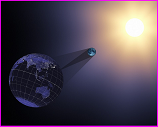 On August 21, 2017, all of North America will be treated to a solar eclipse, including a 90-mile swath of totality stretching from Oregon’s coast to Charleston, S.C. NASA has assembled a helpful guide for where, when, and how to experience the eclipse, including tips for safe viewing.
On August 21, 2017, all of North America will be treated to a solar eclipse, including a 90-mile swath of totality stretching from Oregon’s coast to Charleston, S.C. NASA has assembled a helpful guide for where, when, and how to experience the eclipse, including tips for safe viewing.
Read More
Filed under: Class Activities, K-12 Outreach Programs, Special Features, Web Resources | Comments Off on Eclipse 101: What, Where, How?
Tags: Astronomy, eclipse viewing, Geography, History, Internet Resources, maps, NASA, Outreach, Resources for Teachers, solar eclipse, totality, Web Resources
Posted on August 10th, 2017 by Mary Lord
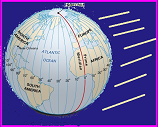 Middle school students learn about the Earth’s geometrical relation to the sun by calculating where the sun will be in the sky for any date or time given a particular location on Earth, such as their school. The three-activity module was developed by lighting engineer Tony Esposito, Ph.D., during his graduate studies at Pennsylvania State University and made available to eGFI Teachers.
Middle school students learn about the Earth’s geometrical relation to the sun by calculating where the sun will be in the sky for any date or time given a particular location on Earth, such as their school. The three-activity module was developed by lighting engineer Tony Esposito, Ph.D., during his graduate studies at Pennsylvania State University and made available to eGFI Teachers.
Read More
Filed under: Class Activities, Grades 6-8, Lesson Plans, Special Features | Comments Off on Solar Geometry
Tags: angle, calendar, Class Activities, day, earth sciences, eclipse, Environmental Engineering, Environmental science, Geometry, globe, Grades 6-8, latitude, Lesson Plans, light engineering, longitude, map, Mathematics, NASA, Project CANDLE, season, Solar Geometry, sun, Tony Esposito Jr.
Posted on August 4th, 2017 by Mary Lord
 eGFI caught up with lighting engineer Tony Esposito, who developed this month’s “solar geometry” lesson while earning a Ph.D. in architectural engineering at Pennsylvania State University, to learn more about his background and what sparked his interest in engineering and education. Check out his story – and tips for teachers!
eGFI caught up with lighting engineer Tony Esposito, who developed this month’s “solar geometry” lesson while earning a Ph.D. in architectural engineering at Pennsylvania State University, to learn more about his background and what sparked his interest in engineering and education. Check out his story – and tips for teachers!
Read More
Filed under: Class Activities, K-12 Outreach Programs, Lesson Plans, Special Features | Comments Off on Meet Lighting Engineer Tony Esposito
Tags: architectural engineering, lighting engineering, Penn State, Project CANDLE, Solar Geometry, STEM education, Tony Esposito
Posted on July 11th, 2017 by Mary Lord
 Stitched circuits and musical instruments made from marshmallows are among the latest offerings in the 2017 Maker Camp, a virtual DIY summer camp sponsored by Make magazine. Many activities could work well as classroom projects, too!
Stitched circuits and musical instruments made from marshmallows are among the latest offerings in the 2017 Maker Camp, a virtual DIY summer camp sponsored by Make magazine. Many activities could work well as classroom projects, too!
Read More
Filed under: Class Activities, Grades 6-8, Grades 9-12, Grades K-5, K-12 Outreach Programs, Web Resources | Comments Off on Virtual Maker Camp
Tags: Class Activities, DIY, Grades 6-8, Grades 9-12, Grades K-5, Internet Resources, Make magazine, Maker camp, STEAM, Summer Camps & Programs (Students), virtual field trips, Web Resources
Posted on July 3rd, 2017 by Mary Lord
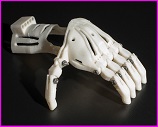 Working in groups of three, middle school students learn about types of forces, the relationship between form and function, and the structure of the hand by working as biomedical engineers to design, build, and test their own hand “gripper” prototypes that can grasp and lift a 200 ml cup of sand.
Working in groups of three, middle school students learn about types of forces, the relationship between form and function, and the structure of the hand by working as biomedical engineers to design, build, and test their own hand “gripper” prototypes that can grasp and lift a 200 ml cup of sand.
Read More
Filed under: Class Activities, Grades 6-8, Grades 6-8, Lesson Plans | Comments Off on Lend A Hand: Teaching Forces
Tags: adaptive device, anatomy, assistive technology, Biomedical Engineering, Class Activities, Design, disability, forces, Grades 6-8, hand, Lesson Plan, prosthetic
Posted on May 30th, 2017 by Mary Lord
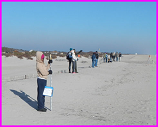 High school students working in groups of three to four learn about the primary causes and impacts of coastal erosion, and use elevation data to construct profiles of a beach over time or to compare several beaches, make inferences about the erosion process, and discuss how humans should respond.
High school students working in groups of three to four learn about the primary causes and impacts of coastal erosion, and use elevation data to construct profiles of a beach over time or to compare several beaches, make inferences about the erosion process, and discuss how humans should respond.
Read More
Filed under: Class Activities, Grades 9-12, Grades 9-12, Grades 9-12, Lesson Plans | Comments Off on Who Moved the Beach?
Tags: beach, Civil Engineering, Class Activities, coastal erosion, coastal management, data analysis, Earth Science, Environmental Engineering, erosion, Grades 9-12, jetties, Lesson Plan, NOAA, USGS
Posted on May 4th, 2017 by Mary Lord
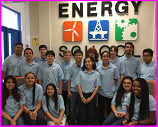 Along with free activity guides for its signature JVInvenTeams innovation contest for students in grades 7 to 10,,the Lemelson-MIT Program is presenting three-day summer workshops this summer designed to help teachers encourage middle and high school students to think and act like inventors while developing solutions to real world problems.
Along with free activity guides for its signature JVInvenTeams innovation contest for students in grades 7 to 10,,the Lemelson-MIT Program is presenting three-day summer workshops this summer designed to help teachers encourage middle and high school students to think and act like inventors while developing solutions to real world problems.
Read More
Filed under: For Teachers, Grades 6-8, Grades 9-12, K-12 Outreach Programs, Special Features, Web Resources | Comments Off on Lemelson-MIT Resources for Teaching Invention
Tags: Grades 6-8, Grades 9-12, Internet Resources, invention, MIT Lemelson, Professional Development, Programs for Teachers, Resources for Teachers, student inventors, Teacher Training, Web Resources
Posted on May 4th, 2017 by Mary Lord
 Students in grades 3 to 8 study coastal erosion and the apply the engineering design process to devise structures and policies to protect shorelines, taking public concerns into account.
Students in grades 3 to 8 study coastal erosion and the apply the engineering design process to devise structures and policies to protect shorelines, taking public concerns into account.
Read More
Filed under: Class Activities, Grades 6-8, Grades 6-8, Grades 6-8, Grades K-5, Grades K-5, Grades K-5, Lesson Plans | Comments Off on Save Our Shore!
Tags: beach, Civil Engineering, Class Activities, coastal engineering, Earth Science, Engineering Design Process, Environmental Engineering, erosion, Grades 6-8, Grades K-5, Lesson Plan, Marine Science, sand
Posted on April 20th, 2017 by Mary Lord
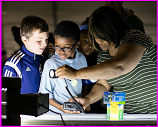 Students in grades 6-7 build light meters and investigate the nature, sources, and levels of light in their classroom. learning about the adverse effects of artificial light on humans, animals, and plants as well as the engineering concepts of sensors and lumen and lux (lx) illuminance units. They also learn how to better use light and save energy as well as some of the technologies designed by engineers to reduce light pollution and energy waste.
Students in grades 6-7 build light meters and investigate the nature, sources, and levels of light in their classroom. learning about the adverse effects of artificial light on humans, animals, and plants as well as the engineering concepts of sensors and lumen and lux (lx) illuminance units. They also learn how to better use light and save energy as well as some of the technologies designed by engineers to reduce light pollution and energy waste.
Read More
Filed under: Class Activities, Grades 6-8 | Comments Off on Measuring Light Pollution
Tags: Class Activities, Computer Science, data analysis, Electrical Engineering, Environmental Engineering, Environmental science, Grades 6-8, graphing, LEGO MINDSTROMS, Light pollution, lumens, lux, Mathematics, measuring, sensors
 On August 21, 2017, all of North America will be treated to a solar eclipse, including a 90-mile swath of totality stretching from Oregon’s coast to Charleston, S.C. NASA has assembled a helpful guide for where, when, and how to experience the eclipse, including tips for safe viewing.
On August 21, 2017, all of North America will be treated to a solar eclipse, including a 90-mile swath of totality stretching from Oregon’s coast to Charleston, S.C. NASA has assembled a helpful guide for where, when, and how to experience the eclipse, including tips for safe viewing.








 Middle school students learn about the Earth’s geometrical relation to the sun by calculating where the sun will be in the sky for any date or time given a particular location on Earth, such as their school. The three-activity module was developed by lighting engineer Tony Esposito, Ph.D., during his graduate studies at Pennsylvania State University and made available to eGFI Teachers.
Middle school students learn about the Earth’s geometrical relation to the sun by calculating where the sun will be in the sky for any date or time given a particular location on Earth, such as their school. The three-activity module was developed by lighting engineer Tony Esposito, Ph.D., during his graduate studies at Pennsylvania State University and made available to eGFI Teachers. eGFI caught up with lighting engineer Tony Esposito, who developed this month’s “solar geometry” lesson while earning a Ph.D. in architectural engineering at Pennsylvania State University, to learn more about his background and what sparked his interest in engineering and education. Check out his story – and tips for teachers!
eGFI caught up with lighting engineer Tony Esposito, who developed this month’s “solar geometry” lesson while earning a Ph.D. in architectural engineering at Pennsylvania State University, to learn more about his background and what sparked his interest in engineering and education. Check out his story – and tips for teachers! Stitched circuits and musical instruments made from marshmallows are among the latest offerings in the 2017 Maker Camp, a virtual DIY summer camp sponsored by Make magazine. Many activities could work well as classroom projects, too!
Stitched circuits and musical instruments made from marshmallows are among the latest offerings in the 2017 Maker Camp, a virtual DIY summer camp sponsored by Make magazine. Many activities could work well as classroom projects, too! Working in groups of three, middle school students learn about types of forces, the relationship between form and function, and the structure of the hand by working as biomedical engineers to design, build, and test their own hand “gripper” prototypes that can grasp and lift a 200 ml cup of sand.
Working in groups of three, middle school students learn about types of forces, the relationship between form and function, and the structure of the hand by working as biomedical engineers to design, build, and test their own hand “gripper” prototypes that can grasp and lift a 200 ml cup of sand. High school students working in groups of three to four learn about the primary causes and impacts of coastal erosion, and use elevation data to construct profiles of a beach over time or to compare several beaches, make inferences about the erosion process, and discuss how humans should respond.
High school students working in groups of three to four learn about the primary causes and impacts of coastal erosion, and use elevation data to construct profiles of a beach over time or to compare several beaches, make inferences about the erosion process, and discuss how humans should respond. Along with free activity guides for its signature JVInvenTeams innovation contest for students in grades 7 to 10,,the Lemelson-MIT Program is presenting three-day summer workshops this summer designed to help teachers encourage middle and high school students to think and act like inventors while developing solutions to real world problems.
Along with free activity guides for its signature JVInvenTeams innovation contest for students in grades 7 to 10,,the Lemelson-MIT Program is presenting three-day summer workshops this summer designed to help teachers encourage middle and high school students to think and act like inventors while developing solutions to real world problems.  Students in grades 3 to 8 study coastal erosion and the apply the engineering design process to devise structures and policies to protect shorelines, taking public concerns into account.
Students in grades 3 to 8 study coastal erosion and the apply the engineering design process to devise structures and policies to protect shorelines, taking public concerns into account. Students in grades 6-7 build light meters and investigate the nature, sources, and levels of light in their classroom. learning about the adverse effects of artificial light on humans, animals, and plants as well as the engineering concepts of sensors and lumen and lux (lx) illuminance units. They also learn how to better use light and save energy as well as some of the technologies designed by engineers to reduce light pollution and energy waste.
Students in grades 6-7 build light meters and investigate the nature, sources, and levels of light in their classroom. learning about the adverse effects of artificial light on humans, animals, and plants as well as the engineering concepts of sensors and lumen and lux (lx) illuminance units. They also learn how to better use light and save energy as well as some of the technologies designed by engineers to reduce light pollution and energy waste.